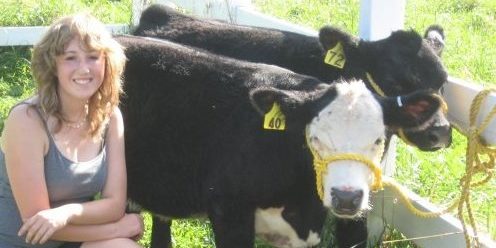Every industry, especially the agriculture industry is subject to ambiguous terminology that has extremely important implications. One of the most contested terms that holds serious implications for agricultural enthusiasts, animal lovers and farmers alike is: animal welfare. In the simplest terms, animal welfare correlates to the proper treatment of animals both in and outside of the livestock production sphere. The notion of “proper treatment” however is another issue in itself. In this, there is an overwhelming presence of ambiguity as far as who defines what proper treatment means.
The question I have come to ponder is…. what does animal welfare REALLY mean? We have laws, regulations and social movements dedicated to this mysterious notion of “animal welfare.” To what standard does one have to meet to be engaging in the proper welfare of animals? There are a lot of different opinions on this subject.
For example: The American Veterinary Medical Association defines animal welfare as follows: “Measuring and protecting an animal’s welfare requires attention to its physical and mental health. The actions and choices of people impact the welfare of all domestic and many wild animals. Accordingly, the veterinary profession has great responsibility and tremendous opportunity to work with people and animals to ensure animals’ good welfare.”
I like that the AVMA’s explanation communicates the broad idea that animal welfare refers to the health and quality care of animals, and that they emphasize veterinarians’ role in helping farmers establish and maintain good animal welfare practices. In my opinion, this definition does leave “good health” up to interpretation, though. This vague definition can leave the door open for a lot of confusion on who is able to define what ‘good health’ is, which is troublesome considering the disconnect in understanding animal care practices between livestock industries and animal rights activist groups such as PETA and the ASPCA.
Lets look at another definition…. The World Organization for Animal Health cites animal welfare as being the following: “Animal welfare means how an animal is coping with the conditions in which it lives. An animal is in a good state of welfare if (as indicated by scientific evidence) it is healthy, comfortable, well nourished, safe, able to express innate behavior, and if it is not suffering from unpleasant states such as pain, fear, and distress.”
Yet again I see another example full of interesting concepts like “healthy, comfortable, well-nourished, safe, etc.” But once again I see the same issue occurring once again… ambiguity.
Another example is: In a video released by one of my personal favorite organizations, the National Cattlemen’s Beef Association, members of the beef industry were asked to react and define for themselves what animal welfare means to them – check it out here.
In almost EVERY response, animal welfare was taken to include the notion of taking care of their animals everyday, ensuring that they always had proper food and water and shelter and even at times treating them like they were in a symbiotic relationship with us. Lance Zimmerman of Kansas who owns a cattle farm quoted, “we respect these animals (cattle).” He continued to say that “if we’re good to them, they’re good to us, just like a good friend would be.”
I realized quickly that pondering this question would not yield me any finite answers. I do not believe that anyone could possibly have a totally all-inclusive answer for animal welfare. I did see that everyone can be helpful by providing their own definition of what animal welfare means to them. That being said, as a cattle farmer and beef steer enthusiast myself I attempted to provide my own inclusive answer for animal welfare…
Animal welfare means to me: Animal welfare (n): Treating my livestock as well as I would treat myself while out in the barn, meaning keeping the stalls clean from fecal waste products, providing 24/7 access to clean water that has been run by a purifier, access to a food source with consistent feedings twice per day, feeding rations of proportional body weight (for steers, its roughly 3% of body weight per day), keeping all corrals free of any potentially harmful substances such as glass, or garbage blown in by the wind, and providing shelter from harsh weather conditions, and lastly regular check-ups on all animals so that any illnesses or medical issues are spotted and taken care of appropriately by a trained, medical professional.
My definition is long, yes, similar to other definitions, yes, but attempts to be a bit more specific as to what animal welfare means for me personally. I know there is some sense of ambiguity, however I think defining the concept for myself helped me get just a little bit closer to a firm understanding than I was before, and I would encourage others to ponder the question too. Rome wasn’t built in a day, and certainly the animal welfare definition mystery won’t be solved in a day either. In closing, I feel accomplished every day when I adhere to my guidelines, and as Mr. Zimmerman said, when I am good to them, they are good to me, especially in the show ring!
All posts are the opinion of the author and do not necessarily represent the view of the Animal Ag Alliance.











